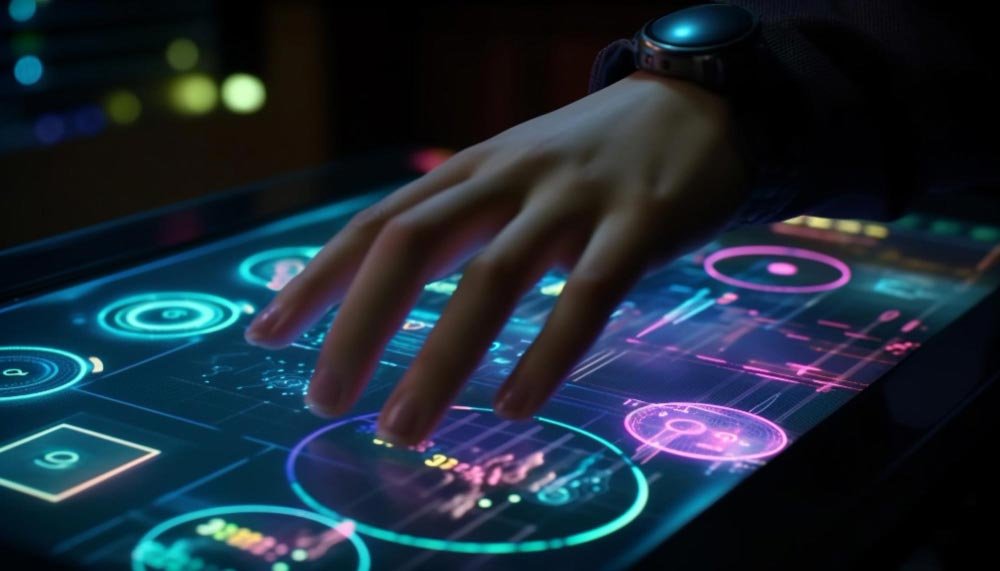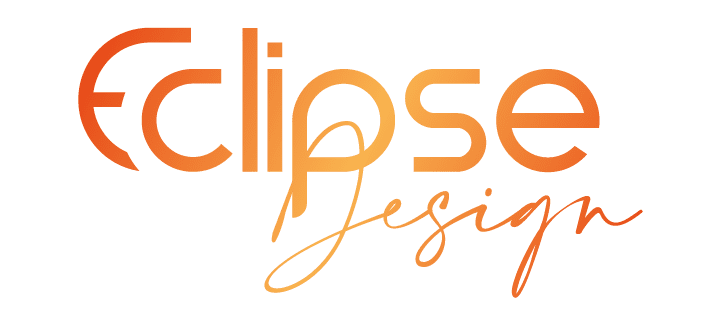- Related Categories: Web Design & Development, Web Design Tips
Table of Contents

The world of web design is evolving at a rapid pace, and with it, the age-old debate continues to spark interest and discussion. Do you need to know how to code to be a successful web designer? This article will delve into this question, offering a comprehensive look at the role of coding in web design, the advantages it brings, and the alternatives that have emerged in recent years. We will also explore how AI-powered web design tools like Elementor Hosting are revolutionizing the industry. By the end of this article, you will have a clearer perspective on the path that best aligns with your goals and aspirations in web design.
Understanding the Role of Coding in Web Design
Coding is often considered the backbone of web development, and understanding its role in web design is vital for aspiring designers. While it is true that not all web designers need to be expert programmers, having a foundational understanding of coding languages like HTML, CSS, and JavaScript can be incredibly beneficial.
Knowing how to code empowers web designers to create custom designs, troubleshoot technical issues, and work more effectively with developers. It also opens up opportunities for creating unique and interactive web elements that can set a website apart in a crowded online landscape. A deep knowledge of code allows web designers to bring their creative visions to life with precision and control.
However, it is worth noting that the degree of coding knowledge required can vary widely based on the specific role and industry niche. For some web designers, a basic understanding of coding may suffice, while others may benefit from more advanced coding skills, especially if they work on complex and interactive websites. Ultimately, the level of coding expertise you need will depend on your career goals and the types of projects you want to pursue.
Advantages of Knowing Code for Web Designers
Knowing how to code offers significant advantages to web designers. First and foremost, it enhances their capabilities and versatility in the field. A web designer who can code can bridge the gap between design and development, resulting in more efficient collaboration and faster project delivery. They have a deeper understanding of how their designs translate into functional websites, making it easier to communicate their ideas to developers and troubleshoot issues when they arise.
Additionally, coding proficiency allows web designers to create unique and custom web experiences. They can design websites that go beyond the limitations of pre-made templates and standard design tools. This level of creativity can be a significant selling point for clients and employers, as it allows for more tailored and engaging web solutions.
Moreover, coding skills empower web designers to stay updated with the latest web technologies and trends. They can adapt to new tools, languages, and design methodologies more easily, ensuring that their work remains relevant in a rapidly changing digital landscape. Being code-savvy opens doors to a wider range of job opportunities and career growth, as clients and companies often value web designers who can bring both design and technical skills to the table.
The Alternatives: No-code and Low-code Platforms
In recent years, the rise of no-code and low-code platforms has revolutionized web design, providing alternatives for those who may not have extensive coding knowledge. No-code platforms, in particular, empower individuals to create websites without any coding skills. These platforms often feature intuitive drag-and-drop interfaces, pre-built design elements, and templates that make web design accessible to a broader audience.
Low-code platforms, on the other hand, offer a middle ground. They provide some coding flexibility while simplifying the development process. These tools are particularly useful for web designers who have a basic understanding of code but prefer not to engage in extensive programming.
No-code and low-code platforms have their advantages, particularly in terms of speed and ease of use. They allow web designers to create websites quickly and efficiently, reducing the time and effort required for development. These platforms have opened opportunities for individuals and businesses to create professional-looking websites without the need for deep coding expertise.
However, it is essential to note that no-code and low-code platforms may have limitations in terms of customization and complexity. For highly unique and specialized websites, having coding knowledge may still be necessary to achieve specific design and functionality goals. Therefore, the choice between coding and no-code/low-code platforms depends on the nature of the project, the designer’s skill level, and the client’s requirements.
Balancing Act: The Code-Less Web Designer

So, is it possible to be a successful web designer without diving deep into coding languages? The answer is yes, but it requires a thoughtful approach. Web designers who choose not to focus on extensive coding can still thrive in the field by leveraging the power of no-code and low-code platforms, as well as their design creativity.
Web designers should see coding knowledge as a valuable asset that enhances their skills, but not necessarily a mandatory requirement. A code-less web designer can still create stunning and functional websites by mastering design principles, user experience, and visual aesthetics. The key is to understand when to use coding and when to rely on alternative tools.
It is also essential for code-less web designers to cultivate effective communication and collaboration with developers. A strong working relationship between designers and developers can bridge the gap between design and technical implementation, ensuring that the final product meets the intended design vision.
The success of code-less web designers often hinges on their ability to adapt to new design tools and techniques and to stay updated on industry trends. They should continually refine their design skills, create user-friendly websites, and embrace the rapidly evolving technology that shapes the web design landscape.
Exploring Diverse Paths in Web Design
The world of web design is a vibrant tapestry woven with diverse threads of expertise, passion, and creativity. As you embark on your journey in this dynamic field, it is essential to recognize that there is no one-size-fits-all approach. The beauty of web design lies in its flexibility and adaptability to individual preferences and strengths.
Some web designers find their calling in mastering coding languages, becoming the architects of the digital world, and crafting intricate designs and interactive experiences from the ground up. Others discover their niche in utilizing no-code and low-code platforms, seamlessly translating their creativity into functional designs without delving into the intricacies of coding. The path you choose is uniquely yours and can evolve over time as you refine your skills and explore new horizons.
Consider the great artists who had various styles and techniques. Just like Picasso had his Blue Period and Cubism, you too can find your distinctive style in web design. It is about finding what ignites your passion and allows you to express your creativity most effectively.
Your journey may involve wearing multiple hats — designer, communicator, collaborator, problem solver. It is about mastering the art of user experience, understanding the psychology of design, and embracing the ever-changing technologies that drive the digital world forward. The evolution of web design is a testament to its endless possibilities and your potential to innovate within it.
In this vast landscape, there’s room for experimentation, growth, and finding your unique voice. Embrace the diversity of paths that web design offers and be excited about the journey ahead. As you navigate this creative realm, trust your instincts, stay curious, and remember that your creative expression in web design has the power to captivate, inspire, and make a difference. The web design landscape is vast, and the adventure is yours to explore and shape.
The Rise of AI-Powered Web Design Tools
In the age of technological advancements, AI-powered web design tools like Elementor Hosting are making waves, revolutionizing how websites are created and managed. These tools utilize innovative algorithms to automate the web design process, allowing designers to generate entire websites swiftly and efficiently. AI-powered web design tools analyze data, trends, and user behavior to provide valuable design suggestions and insights, enhancing the overall design process.
Elementor Hosting, as one of the AI-driven web design tools, has gained popularity for its ability to streamline web development. By employing machine learning and AI (Artificial Intelligence) algorithms, Elementor Hosting simplifies the design workflow, making it accessible to both seasoned designers and beginners. The tool offers features such as predictive design recommendations, auto-layout adjustments, and personalized content suggestions, enabling designers to create websites that align with the latest design trends and user preferences.
Advantages of AI-Powered Web Design Tools

The integration of AI in web design brings forth numerous advantages, enhancing speed, accuracy, and creativity. AI-powered web design tools like Elementor Hosting can significantly reduce the time required to design a website. By automating repetitive tasks and offering design suggestions, designers can complete projects faster, allowing them to take on more clients and increase their overall productivity.
Moreover, AI-driven design tools improve the accuracy and precision of the design process. These tools analyze vast amounts of data to identify patterns and trends, enabling designers to create designs that resonate with target audiences. By leveraging AI insights, designers can optimize layouts, color schemes, typography, and other design elements to maximize user engagement and satisfaction.
Additionally, AI-powered web design tools foster creativity and innovation. They provide designers with new perspectives and ideas, pushing the boundaries of traditional design. By automating routine design tasks, designers can focus more on innovative aspects, experimenting with unique design concepts and pushing their creative limits.
Balancing AI with Human Creativity in Web Design
While AI tools like Elementor Hosting offer unprecedented efficiency, the human touch in web design remains invaluable. AI-powered web design tools are not meant to replace designers but to augment their capabilities. Designers should view AI as a powerful assistant that can handle mundane and repetitive tasks, allowing them to concentrate on higher-level creative and strategic aspects of design.
The ideal approach is to strike a balance between AI automation and human creativity. Designers can use AI suggestions as a starting point and then infuse their creativity to tailor designs to the specific needs and brand identity of the project. By leveraging AI’s efficiency and insights, designers can enhance their productivity and deliver exceptional designs that align with their clients’ objectives.
Designers should embrace AI as a tool that complements their skills and augments their creative process. AI can handle data analysis, pattern recognition, and design recommendations, while designers bring their expertise in storytelling, emotional connection, and user-centric design to the table. The collaboration between AI and human creativity can lead to truly exceptional and innovative web designs.
Common Concerns Addressed

Addressing common concerns is crucial in helping aspiring web designers navigate their journey with clarity and confidence. Here are some frequently asked questions about coding, AI, and web design, along with informative answers:
Do I need to be an expert coder to be a successful web designer?
No, you do not need to be an expert coder to be a successful web designer. However, having a foundational understanding of coding languages can significantly enhance your capabilities and versatility in the field. HTML, CSS, and JavaScript are fundamental languages that empower designers to create and customize website layouts, styles, and interactivity. You can start by learning the basics and gradually build your coding skills as you gain experience. Additionally, there are no-code and low-code platforms available that allow designers to create websites without extensive coding knowledge. These platforms offer pre-built design elements and intuitive interfaces, enabling designers to focus on the design and layout while the platform handles the technical aspects.
Can AI-powered web design tools replace human designers?
AI-powered web design tools are not meant to replace human designers. They are tools that assist designers by automating certain aspects of the design process, allowing designers to focus more on creativity and innovation. AI can generate design suggestions based on data analysis and trends, but the final design decisions, creativity, and understanding of the client’s needs come from the human designer. AI is a valuable assistant that complements a designer’s skills, aiding in repetitive tasks, providing insights, and improving workflow efficiency. The human touch, including emotional intelligence, creativity, and the ability to understand user experiences, remains essential in delivering exceptional and user-centric designs.
Are no-code platforms suitable for complex web projects?
No-code platforms are suitable for simpler and more straightforward web projects. They are designed to provide an intuitive interface for creating websites without the need for coding. While these platforms offer a range of design elements and customization options, they may have limitations when it comes to highly unique and complex designs. For projects that require advanced functionality, intricate interactions, or specialized design, having some coding knowledge or utilizing low-code platforms, which offer a middle ground between coding and no-code, might be necessary. Designers often find it beneficial to use a combination of no-code platforms and basic coding skills to achieve the desired level of customization and functionality for more complex projects.
Conclusion: Navigating the Web Design Landscape

In conclusion, the answer to whether you need to know code to be a web designer ultimately depends on various factors and personal preferences. Understanding the role of coding and the advantages it brings can guide aspiring web designers in making informed decisions about their career paths. Whether you choose to master coding, embrace AI-powered tools, or leverage no-code platforms, the key is to find an approach that aligns with your goals and allows you to create remarkable web experiences.
FAQ (Frequently Asked Questions)
Is coding essential for becoming a successful web designer?
Coding knowledge can significantly enhance your capabilities as a web designer, but it is not always essential. No-code and low-code platforms offer alternatives for designing websites without extensive coding skills.
What are the key coding languages beneficial for web designers to learn?
HTML, CSS, and JavaScript are foundational coding languages that can benefit web designers. Understanding these languages allows designers to create and customize web designs effectively.
Can I create complex and unique designs using no-code platforms?
No-code platforms provide a range of design elements and customization options, but for highly unique and complex designs, a combination of coding knowledge and no-code tools may be ideal.
How do AI-powered design tools impact the role of a web designer?
AI-powered design tools assist web designers by automating repetitive tasks, providing design suggestions, and optimizing workflows. They complement a designer’s creativity and enhance productivity.
Can a designer with no coding knowledge effectively collaborate with developers?
Yes, effective collaboration is possible between designers and developers. Clear communication and a solid understanding of design principles enable successful collaboration, even if the designer does not have extensive coding knowledge.











